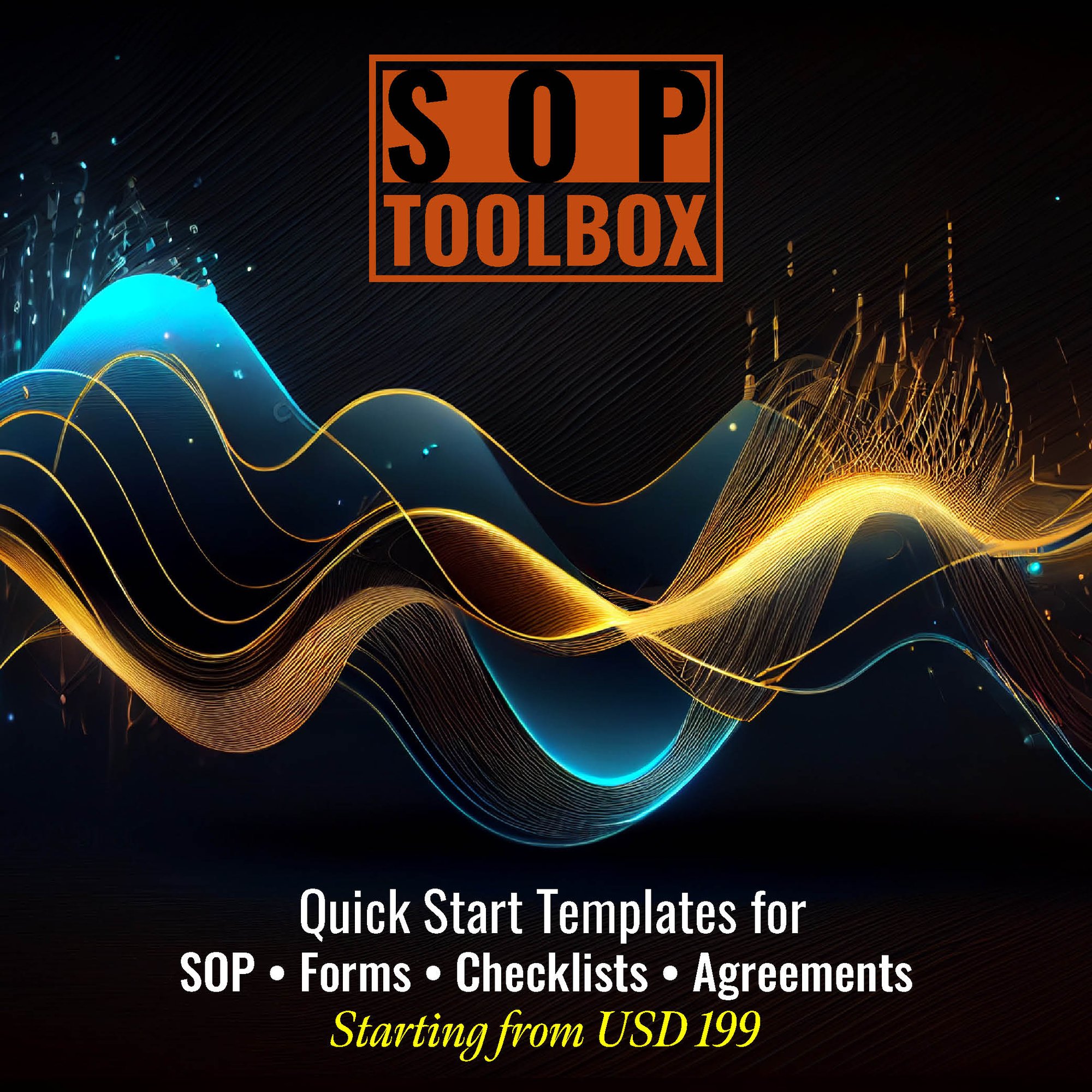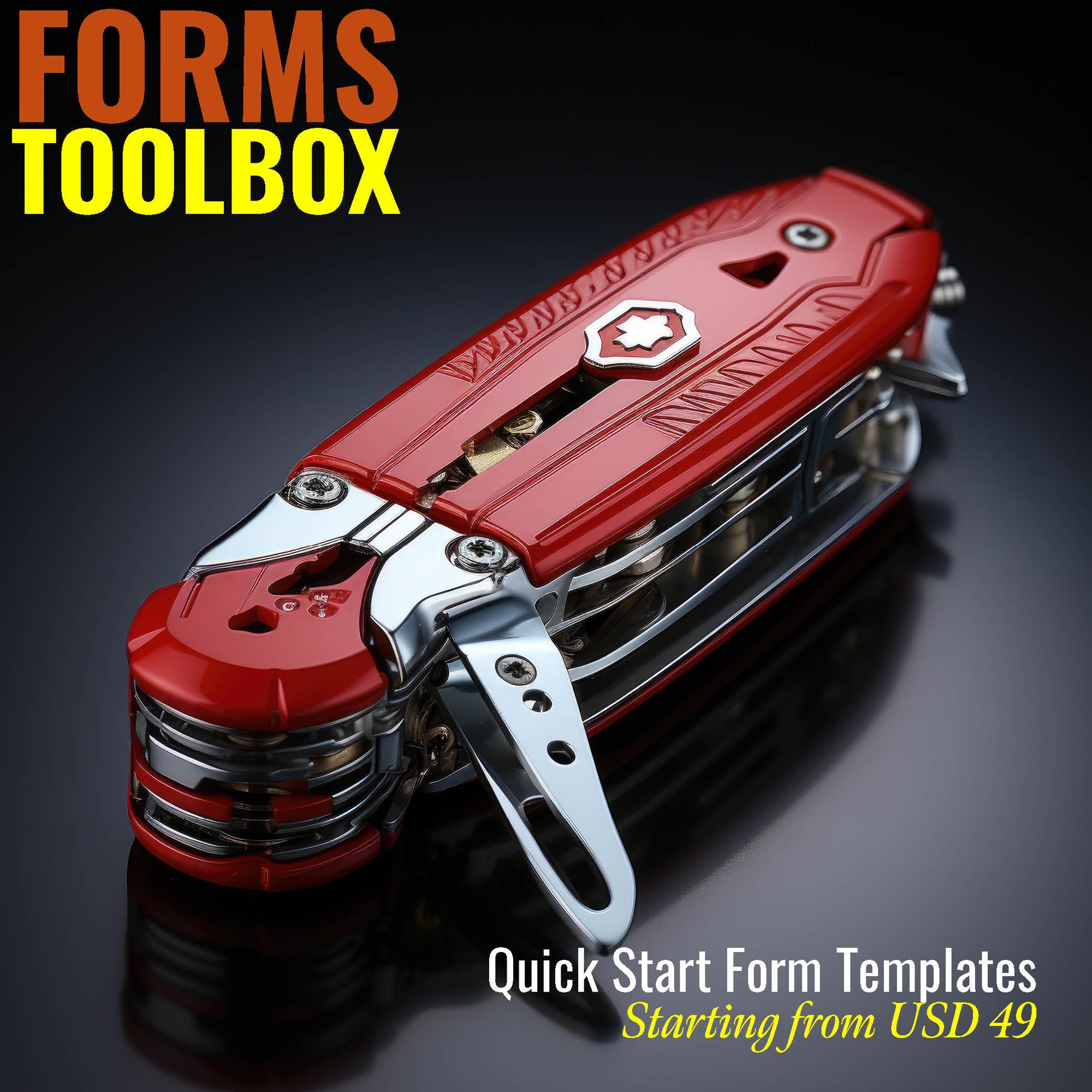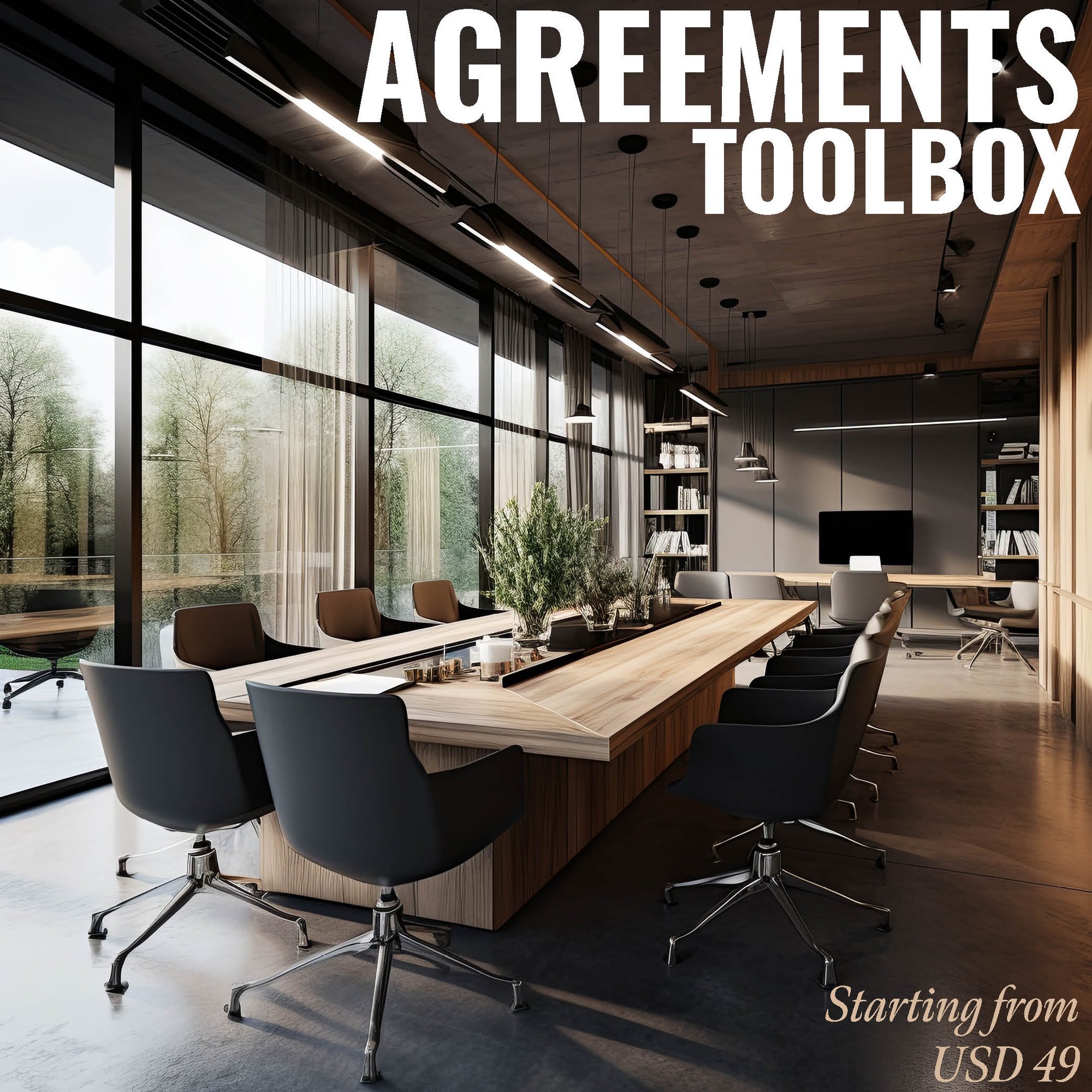An SOP (Standard Operating Procedure) Manual for Prefabricated Metal Building and Component Manufacturing delivers substantial returns and benefits to this sector:
-
Quality Enhancement: Standardized procedures ensure consistent product quality, reducing defects, and enhancing the reliability and durability of prefabricated metal buildings, thereby building trust with customers and improving market competitiveness.
-
Efficiency and Cost Savings: SOPs optimize manufacturing processes, increasing operational efficiency, reducing production time, and minimizing resource wastage, which ultimately contributes to cost savings and profitability.
-
Regulatory Compliance: The manual helps manufacturers adhere to industry regulations, safety standards, and building codes, reducing the risk of non-compliance issues, legal complications, and reputational damage.
-
Training and Onboarding: It serves as a critical resource for training new employees, enabling them to quickly understand manufacturing processes and maintain product consistency.
-
Environmental Responsibility: The manual can include guidelines for sustainable manufacturing practices, promoting eco-friendly operations and compliance with environmental regulations.
-
Innovation and Product Development: It provides a framework for research and development, facilitating the introduction of new technologies and materials into prefabricated metal building manufacturing.
In summary, an SOP Manual for Prefabricated Metal Building and Component Manufacturing yields returns in terms of quality enhancement, efficiency, compliance, employee competence, environmental responsibility, and innovation, ultimately contributing to the long-term success and sustainability of businesses in this industry.
CLICK HERE to download the List of SOPs Document in PDF format. Please share this document with your clients, colleagues and senior officers.
Top 50 SOPs for Standard Operating Procedures (SOPs) for Prefabricated Metal Building and Component Manufacturing
SOP-813-001: Standard Operating Procedure for Material Inspection and Acceptance
SOP-813-002: Standard Operating Procedure for Equipment Calibration
SOP-813-003: Standard Operating Procedure for Component Design and Engineering
SOP-813-004: Standard Operating Procedure for Raw Material Storage
SOP-813-005: Standard Operating Procedure for Cutting and Fabrication
SOP-813-006: Standard Operating Procedure for Welding Processes
SOP-813-007: Standard Operating Procedure for Quality Control in Welding
SOP-813-008: Standard Operating Procedure for Coating and Finishing
SOP-813-009: Standard Operating Procedure for Component Assembly
SOP-813-010: Standard Operating Procedure for Prefabricated Building Layout
SOP-813-011: Standard Operating Procedure for Roof Installation
SOP-813-012: Standard Operating Procedure for Wall Panel Installation
SOP-813-013: Standard Operating Procedure for Floor System Installation
SOP-813-014: Standard Operating Procedure for Window and Door Installation
SOP-813-015: Standard Operating Procedure for Insulation Installation
SOP-813-016: Standard Operating Procedure for Electrical System Integration
SOP-813-017: Standard Operating Procedure for Plumbing System Integration
SOP-813-018: Standard Operating Procedure for HVAC System Integration
SOP-813-019: Standard Operating Procedure for Fire Protection System Integration
SOP-813-020: Standard Operating Procedure for Quality Control in Assembly
SOP-813-021: Standard Operating Procedure for Component Testing
SOP-813-022: Standard Operating Procedure for Structural Integrity Testing
SOP-813-023: Standard Operating Procedure for Thermal Performance Testing
SOP-813-024: Standard Operating Procedure for Acoustic Performance Testing
SOP-813-025: Standard Operating Procedure for Safety Inspection and Compliance
SOP-813-026: Standard Operating Procedure for Shipping and Transportation
SOP-813-027: Standard Operating Procedure for Site Preparation
SOP-813-028: Standard Operating Procedure for On-Site Assembly
SOP-813-029: Standard Operating Procedure for Crane Operation and Safety
SOP-813-030: Standard Operating Procedure for Site Quality Control
SOP-813-031: Standard Operating Procedure for Building Handover
SOP-813-032: Standard Operating Procedure for Customer Training and Support
SOP-813-033: Standard Operating Procedure for Maintenance and Repairs
SOP-813-034: Standard Operating Procedure for Component Recycling
SOP-813-035: Standard Operating Procedure for Environmental Impact Assessment
SOP-813-036: Standard Operating Procedure for Energy Efficiency Evaluation
SOP-813-037: Standard Operating Procedure for Regulatory Compliance
SOP-813-038: Standard Operating Procedure for Documentation and Record Keeping
SOP-813-039: Standard Operating Procedure for Change Management
SOP-813-040: Standard Operating Procedure for Continuous Improvement
SOP-813-042: Standard Operating Procedure for Emergency Response and Evacuation
SOP-813-043: Standard Operating Procedure for Health and Safety Guidelines
SOP-813-044: Standard Operating Procedure for Hazardous Material Handling
SOP-813-045: Standard Operating Procedure for Incident Reporting and Investigation
SOP-813-046: Standard Operating Procedure for Security Protocols
SOP-813-047: Standard Operating Procedure for Confidentiality and Data Protection
SOP-813-048: Standard Operating Procedure for Supplier Evaluation and Management
SOP-813-049: Standard Operating Procedure for Cost Estimation and Budgeting
SOP-813-050: Standard Operating Procedure for Customer Feedback and Satisfaction
SOP ToolBox: If you are reading these lines, I am sure you are looking for Standard Operating Procedure guidelines or SOPs itself. In both the cases, searching in internet will not be yielding any great help. Because no company shares their SOP Development Process and certainly don’t share their SOP Documents. The best way to develop an SOP is creating one for yourself. At Fhyzics, we write SOPs day-in and day-out for companies across the globe including some of the Fortune 500 organisations. Our charge ranges from USD 5000 to USD 50000 depending upon the number of processes to be covered. Certainly, this is not affordable to small and mid-size organisations. Hence, we decided to create this SOP ToolBox to disseminate our 8-Step SOP Development Life-Cycle and best practices at an unbelievably low price.
I always say, writing an SOP is somewhere between art and science. So far you may be clueless on where to start and how to progress on an SOP? This will not be the case after you diligently go through this SOP ToolBox. We have summarised all our secrets here to get you started and to deliver a stunning SOP to your management.
- Buildings, prefabricated metal, manufacturing
- Carports, prefabricated metal, manufacturing
- Dwellings, prefabricated metal, manufacturing
- Farm buildings, prefabricated metal, manufacturing
- Garages, prefabricated metal, manufacturing
- Greenhouses, prefabricated metal, manufacturing
- Houses, prefabricated metal, manufacturing
- Panels, prefabricated metal building, manufacturing
- Portable buildings, prefabricated metal, manufacturing
- Prefabricated buildings, metal, manufacturing
- Prefabricated homes, metal, manufacturing
- Sections for prefabricated metal buildings manufacturing
- Sheds, (e.g., garden, storage, utility) prefabricated metal, manufacturing
- Silos, prefabricated metal, manufacturing
- Utility buildings, prefabricated metal, manufacturing
- Warehouses, prefabricated metal, manufacturing
1. Standard Operating Procedures (SOP) Manual for Accounts Department
2. Standard Operating Procedures (SOP) Manual for Finance Department
3. Standard Operating Procedures (SOP) Manual for Customer Service
4. Standard Operating Procedures (SOP) Manual for CRM Department
5. Standard Operating Procedures (SOP) Manual for Credit Department
6. Standard Operating Procedures (SOP) Manual for Treasury Department
7. Standard Operating Procedures (SOP) Manual for Human Resources (HR) Department
8. Standard Operating Procedures (SOP) Manual for Training Department
9. Standard Operating Procedures (SOP) Manual for Learning & Development Department
10. Standard Operating Procedures (SOP) Manual for Administration Department
11. Standard Operating Procedures (SOP) Manual for Front Office
12. Standard Operating Procedures (SOP) Manual for House Keeping
13. Standard Operating Procedures (SOP) Manual for Safety Department
14. Standard Operating Procedures (SOP) Manual for Security Department
15. Standard Operating Procedures (SOP) Manual for Facilities Management Department
16. Standard Operating Procedures (SOP) Manual for Vigilance Department
17. Standard Operating Procedures (SOP) Manual for Legal Department
18. Standard Operating Procedures (SOP) Manual for Information Technology (IT) Department
19. Standard Operating Procedures (SOP) Manual for Sales & Marketing Department
20. Standard Operating Procedures (SOP) Manual for Design & Engineering
21. Standard Operating Procedures (SOP) Manual for Procurement Department
22. Standard Operating Procedures (SOP) Manual for Production
23. Standard Operating Procedures (SOP) Manual for SRM Department
24. Standard Operating Procedures (SOP) Manual for Supply Chain Department
25. Standard Operating Procedures (SOP) Manual for Warehouse
26. Standard Operating Procedures (SOP) Manual for New Product Development Department
27. Standard Operating Procedures (SOP) Manual for Research and Development
28. Standard Operating Procedures (SOP) Manual for Quality Department
29. Standard Operating Procedures (SOP) Manual for Calibration Department
30. Standard Operating Procedures (SOP) Manual for Maintenance Department
Some of the major players of this industry are
- Smithbilt Industries Inc
- Butler Manufacturing Company
- Burley Corp
- Fbi Buildings Inc
- A And S Building System LP
- Leonard Aluminum Utility
- Qucik Cover Buildings A Subdivision of Anchor Industries Inc
- Nucor Building Systems
- Varco Pruden Buildings
- Red Dot Buildings
- Schult Mfg Homes
- Bluescope Buildings
- Ceilings Plus
- Pennwest Homes
- Gem Buildings
- Skyline Homes Inc
- Chief Industries Inc
- Cbc Steel Buildings Inc
- United Structures of America Inc
- Temo Inc
- T n t Carports Inc
- Specialized Structures Inc
- Parkline Inc
- Eastern Exterior Wall Systems
- Chief Fabrication
- All Weather Inc
- Butler Manufacturing Co
- American Buildings Co
- Metal Building Components Inc
- Central States Manufacturing
- Whitley Evergreen Inc
- SteelMaster Buildings
- Green House Co
- Golden Giant Building Systems
- Nexus Corp
- Southern Aluminum
- Karotech Inc
- USA Quality Steel Buildings
- M And M Coastal Mfg. Inc
- Shielding Dynamics Inc
- Steele Solutions
- Mobilr Mini Inc
- Hobcaw Creek Plantation
- Frey Dock And Barge
- Straight Line Piers
- Dock Solutions Inc
- Forever Piers
- Dock Side
- Llc Metalmax
- Oliver Technologies Inc
- Jet Dock Systems
- Vacono America, LLC
- Blackwater Truss Systems
- Coast To Coast Carports
- Onvio Servo, LLC
- Schulte Building Systems Inc
- Home Pride Inc
- Carolina Greenhouse Plants Inc
- B And J Production
- Four Seasons Sunrooms
- Duralum Products Inc
- Altech Panel Systems Llc
- Goldin Metals Inc
- Factory Direct Inc
- Kitchens To Go Built By Carlin
- American Buildings Co
- Martin Docks Lnc
- Reed's Metals
- Chief Environmental Products
- Arrow Group Industries
- Varco Pruden Buildings
- Welcome Ramp Systems Inc
- Innovative Green Building Systems, LLC
- Four Seasons Sunrooms By Sun Boss
- Cover All Building Solutions
- Steel Buildings
- Rad Technology Medical Systems Llc
- Cleary Building Corp
- T I Fast
- Naples Dock And Marine Services Inc
- Zodiac Enterprises
- Ord Green House
- Nucor Building Systems
- Morgan Buildings And Spas Inc
- Affordable Structers
- Grace Lake, LLC
- Cleary Building Inc
- Cleary Building Corp
- Three Z Building
- Mbcs
- Sunward Consolidated Group
- Tatum Steel Buildings Corp
- Pro Building System Inc
- Student Advisement Center
- Mac Metals Inc
- Sturdi Built Storage Buildings, LLC
- Cleary Building Corp
- Montana Quality Structures
- Butler Manufacturing Co
- Cleary Building Corp
Benefits of using Prefabricated Metal Building and Component
- Eco-Friendly
- Financial Savings
- Flexibility
- Consistent Quality
- Reduced Site Disruption
- Shorter Construction Time
- Safety
- Metal Building Manufacturers Association (MBMA)
https://www.mbma.com/ - Fabricators & Manufacturers Association, International (FMA)
https://www.fmamfg.org/ - American Architectural Manufacturers Association (AAMA)
https://aamanet.org/
Research By : Mohammed Ijas
Our SOP Templates’ clients are from the following States and Countries:
Alabama, Alaska, Arizona, Arkansas, California, Colorado, Connecticut, Delaware, Florida, Georgia, Hawaii, Idaho, Illinois, Indiana, Iowa, Kansas, Kentucky, Louisiana, Maine, Maryland, Massachusetts, Michigan, Minnesota, Mississippi, Missouri, Montana, Nebraska, Nevada, New Hampshire, New Jersey, New Mexico, New York, North Carolina, North Dakota, Ohio, Oklahoma, Oregon, Pennsylvania, Rhode Island, South Carolina, South Dakota, Tennessee, Texas, Utah, Vermont, Virginia, Washington, West Virginia, Wisconsin, Wyoming.
Afghanistan, Albania, Algeria, Andorra, Angola, Antigua and Barbuda, Argentina, Armenia, Australia, Austria, Azerbaijan, Bahamas, Bahrain, Bangladesh, Barbados, Belarus, Belgium, Belize, Benin, Bhutan, Bolivia, Bosnia and Herzegovina, Botswana, Brazil, Brunei Darussalam, Bulgaria, Burkina Faso, Burundi, Cabo Verde, Cambodia, Cameroon, Canada, Central African Republic, Chad, Chile, China, Colombia, Comoros, Congo (Republic of the), Costa Rica, Croatia, Cuba, Cyprus, Czech Republic (Czechia), Democratic People’s Republic of Korea (North Korea), Democratic Republic of the Congo, Denmark, Djibouti, Dominica, Dominican Republic, Ecuador, Egypt, El Salvador, Equatorial Guinea, Eritrea, Estonia, Eswatini, Ethiopia, Fiji, Finland, France, Gabon, Gambia, Georgia, Germany, Ghana, Greece, Grenada, Guatemala, Guinea, Guinea-Bissau, Guyana, Haiti, Honduras, Hungary, Iceland, India, Indonesia, Iran, Iraq, Ireland, Israel, Italy, Jamaica, Japan, Jordan, Kazakhstan,Kenya, Kiribati, Kuwait, Kyrgyzstan, Lao People’s Democratic Republic (Laos), Latvia, Lebanon, Lesotho, Liberia, Libya, Liechtenstein, Lithuania, Luxembourg, Madagascar, Malawi, Malaysia, Maldives, Mali, Malta, Marshall Islands, Mauritania, Mauritius, Mexico, Micronesia (Federated States of), Moldova, Monaco, Mongolia, Montenegro, Morocco, Mozambique, Myanmar (Burma), Namibia, Nauru, Nepal, Netherlands, New Zealand, Nicaragua, Niger, Nigeria, North Macedonia (formerly Macedonia), Norway, Oman, Pakistan, Palau, Panama, Papua New Guinea, Paraguay, Peru, Philippines, Poland, Portugal, Qatar, Republic of Korea (South Korea), Republic of the Congo, Romania, Russian Federation (Russia), Rwanda, Saint Kitts and Nevis, Saint Lucia, Saint Vincent and the Grenadines, Samoa, San Marino, Sao Tome and Principe, Saudi Arabia, Senegal, Serbia, Seychelles, Sierra Leone, Singapore, Slovakia, Slovenia, Solomon Islands, Somalia, South Africa, South Sudan, Spain, Sri Lanka, Sudan, Suriname, Sweden, Switzerland, Syrian Arab Republic (Syria), Tajikistan, Thailand, Timor-Leste, Togo, Tonga, Trinidad and Tobago, Tunisia, Turkey, Turkmenistan, Tuvalu, Uganda, Ukraine, United Arab Emirates, United Kingdom of Great Britain and Northern Ireland, United Republic of Tanzania, United States of America, Uruguay, Uzbekistan, Vanuatu, Venezuela, Viet Nam, Yemen, Zambia, Zimbabwe.
Fhyzics supports organisations in developing the following documentations:
Standard Operating Procedures (SOPs), Work Instructions, Policies and Procedures, Process Flow Diagrams, Job Descriptions, Training Manuals, Employee Handbooks, Compliance Guidelines, Quality Assurance Manuals, Health and Safety Procedures, Risk Management Plans, Business Continuity Plans, Internal Audit Procedures, Incident Reporting Forms, Performance Management Guidelines, Change Management Procedures, Vendor Management Guidelines, Customer Service Protocols, IT Security Policies, IT Support Documentation, Disaster Recovery Plans, Operational Checklists, Data Management Policies, Confidentiality Agreements, Non-Disclosure Agreements, Employee Onboarding Procedures, Employee Exit Procedures, Performance Appraisal Forms, Employee Code of Conduct, Conflict Resolution Procedures, Product Development SOPs, Supply Chain Management Guidelines, Procurement Guidelines, Inventory Management SOPs, Shipping and Receiving Procedures, Production Scheduling SOPs, Maintenance Procedures, Equipment Calibration Documents, Environmental Compliance Documentation, Sustainability Policies, Customer Feedback Forms, Marketing Strategies, Advertising Guidelines, Brand Management Guidelines, Product Packaging SOPs, Laboratory Testing Procedures, Regulatory Compliance Documentation, Tax and Accounting Procedures, Contract Management Procedures, Legal Compliance Guidelines, Financial Reporting Procedures, Budgeting Procedures, Internal Control Procedures, Fraud Prevention Policies, Asset Management Guidelines, Purchase Order Procedures, Sales and Distribution Guidelines, Client Contracts, Customer Return Policies, Internal Communication Protocols, Vendor Evaluation Forms, Product Safety Standards, Workplace Health and Safety Standards, Public Relations Procedures, Social Media Management Guidelines, Crisis Management Plans, Employee Grievance Procedures, Privacy and Data Protection Policies, Digital Transformation Guidelines, Innovation Management Procedures, Continuous Improvement Guidelines, Strategic Planning Documents, Corporate Social Responsibility (CSR) Guidelines, Audit Trails and Records, Employee Training and Development Records, Succession Planning Documents, Talent Acquisition Procedures, Team Collaboration Protocols, Employee Benefit Plans, Workplace Diversity Guidelines, Time and Attendance Tracking, Payroll Procedures, Employee Leave Policies, Conflict of Interest Policy, Emergency Response Procedures, Environmental Impact Assessment Procedures, Transportation and Logistics Procedures, Inventory Control Forms, Warehouse Management Guidelines, Product Lifecycle Management SOPs, Customer Satisfaction Surveys, Third-Party Risk Assessment Guidelines, Technology Adoption Policies, Software Licensing Guidelines, Security Incident Response Procedures, Supply Chain Risk Management Policies, Product Recall Procedures, Food Safety Guidelines, Employee Wellness Programs, Workplace Ergonomics Guidelines.






.jpg?width=645&height=337&name=Standard%20Operating%20Procedure%20-%20SOP%20ToolBox%20(1).jpg)











